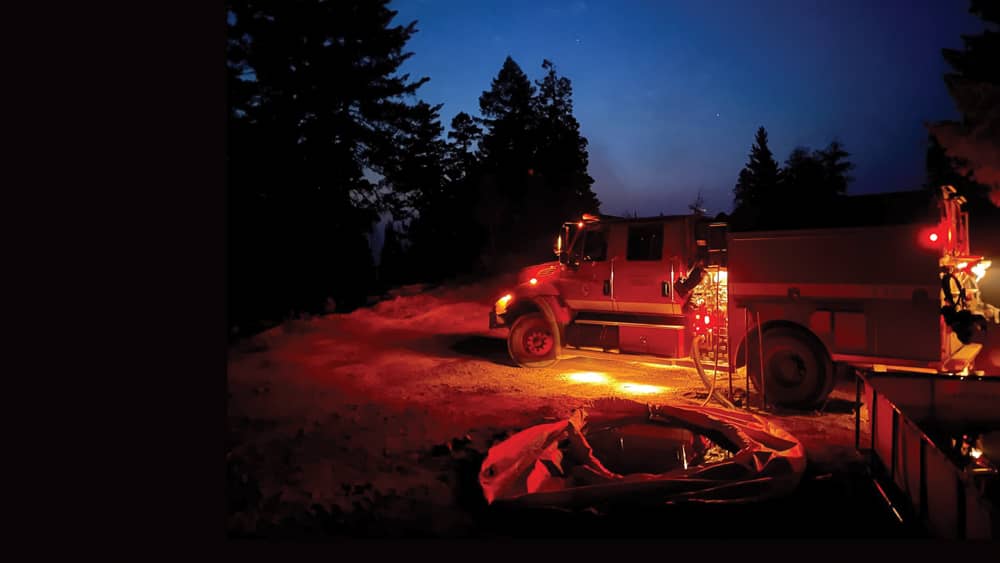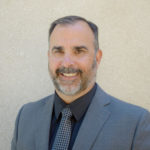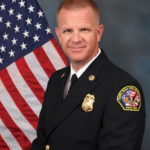
Sometimes it takes a catastrophe to open up a new way of thinking and working toward the future. For many people, the wake-up call came in October 2017, when the Tubbs Fire raged into Santa Rosa from Calistoga, taking 22 lives, destroying entire neighborhoods and causing devastation many feel to this day. For Napa County Fire Chief, Jason Martin, the wake-up came in 2015, in Lake County, with the Valley Fire. It was different.
“The interesting thing about the Valley fire was that it stood up––meaning started to move––very, very rapidly after the initial ignition,” says Martin, then a 24-year veteran firefighter. “And it moved through a timber stand, where the fire would normally have slowed down.” Fires normally die down late in the day, he notes, giving firefighters an opportunity to move in and fight them. But the Valley fire did not slow down. Instead, it continued to grow exponentially through the night, burning through the timber into the lowlands and destroying much of Cobb, Middletown and Hidden Valley, taking more than 50,000 acres the first day. By the time it was contained, it had taken a shocking toll: more than 76,000 acres, more than 1,200 homes and four lives.
Two years later, when the Tubbs Fire was taking its toll and the Atlas fire was burning through the hills in the lower part of Napa County, Martin recognized similar conditions to those he’d experienced in the Valley fire. “The interesting aspect between those two fires was first the wind, which is very, very hard for firefighters to compensate for, and the gravity of the incident, which compounded itself in a rapid nature. So instead of fighting the fire, our task was saving lives and evacuating buildings.” The shock and loss, the vastness of the devastation of communities and the subsequent displacement of people affected Sonoma County in just about every way––physical, psychological, financial. Most everyone knew someone who had lost a home.
The community pulled together, and the general consensus then was what a relief it would be to get through a few years without fire and recover. But two years later the Kincade fire arrived, burning almost 78,000 acres and forcing 90,000 people to evacuate. By August 2020, after the LNU Complex fires sprawled across wine country in five counties and the Glass fire followed right on its heels, the conversation changed. Charred hills and forests could be seen almost everywhere. Restaurants and wineries were damaged or destroyed. At the time, California was moving into the current drought and reports showed forests drying out to a point early in the summer that they would normally reach in the fall. This early drying out, combined with “exceptional” drought conditions, would mean that the “fire season,” that time in which Calfire expects the fire to be possible or likely to occur, would become even longer, making conditions prime for big fires, megafires. Now, firefighters and others began openly to talk about not “if” a fire comes, but “when.”
County leadership
Visualizing a future that includes resilience to wildfires has meant opening the door to a new way of thinking––about fire, climate change, landscape aesthetics and how people and communities can work together. That means it’s everybody’s business—residents, homeowners, landowners, firefighters, agencies, organizations and community leaders—to take the steps and do the work to reduce the risk of widespread catastrophic loss. Because it’s not only impacting individuals suffering loss but towns, cities and businesses impacted by the associated damage that these megafires bring. This new thinking can be empowering. It’s no longer about what fire departments and other agencies are doing to keep communities safe. They are doing plenty. The new thinking is about helping everybody to do their part to become part of the solution. So where to begin?
Home defense

“Everyone likes to look at the wildlands as the problem,” says Mark Brown, executive officer of Marin Wildfire Prevention Authority. “But it took us decades [of forest neglect] to create the problem we have, and it’s going to take decades to solve that problem.” Our beautiful communities in the WUI (wildland/urban interface), surrounded by trees and forests, homes, or houses, represent fuel, he explains. Houses and the contents—cars, garages, propane tanks—are extremely flammable. “So, if you look at the urban conflagration (such as the Tubbs Fire, which crossed the interstate and moved into the city of Santa Rosa, it tends to be more house-to-house burning than it is vegetation-to-house burning. So if we can keep homes from becoming ignited,” he says, “then we eliminate one of the biggest ember producers we have in these fires.”
“Home hardening” is the phrase used to describe the tightening up of your house against flying embers––which, in a wind-driven fire can travel at great speed from great distances––or from the fire itself. Going through the process can be illuminating. Homeowners who take the time to consider this may find numerous conditions they never thought of as dangerous: the woodpile under the deck, gutters full of dry leaves, wooden fences that connect to the house, as well as vents, which can let in embers and even windows. Experts advise installing dual-pane windows to reduce the chance of breakage in case of fire. (For more information, visit Cal Fire’s website at fire.ca.gov.)
Defensive space
Sonoma County First District Supervisor Susan Gorin blames her landscaping for the loss of her home in the Tubbs fire. “I remember vividly the day [sometime before the fire] when I looked at this long line of juniper bushes. I said, ‘In the spring, I’m going to hire a bulldozer to get them out.’ Well, they’re gone.” The Tubbs fire took the junipers and her house, as well. Since then, Gorin has been earnestly vocal about the importance of creating defensive spaces around homes.
Cal Fire defines it as the buffer you create between your house or a building on your property and the grass, trees, shrubs, or any wildland area that surrounds it. Ideally, proper defensible space also ideally provides firefighters a safe area to get in, turn around, work in, and defend your home. “You have to create the time for firefighters to think about their ability to save a structure,” says Gorin. “And they cannot do that if you have flames all-around your house.”
Gorin works hard to help educate and motivate people to change their landscaping. “We have groups of volunteers, doing walks around the homes in Oakmont,” she says, “offering suggestions on which trees and bushes should come down and how you leave at least five feet, maybe 10 feet around the house with gravel and low-growing plants.”

Improving evacuation routes
Evacuation is about saving lives. Each county has been working continuously to improve evacuation routes, clearing vegetation and compromised, dead trees from possibly impeding roadways in time of an emergency. “We are working hard on our evacuation routes,” says Mark Brown, of the work being done in Marin, but he cautions people to adjust their expectations.
“No matter what you do during the evacuation of a wildfire, there are going to be traffic jams,” he says. “The roads simply are not designed to carry that many cars at once.” He reminds those who tend to get frustrated to remember the roads leading out of the parking lots at a baseball stadium. “These roads were designed for people to get out quickly,” he says. “But did you ever get out of a stadium quickly after a game?” So expect traffic jams during evacuations, but know that the counties are working to make sure that the evacuation routes are safe enough. Even if evacuees are stuck in a traffic jam, he says, they’re going to survive.
Be ready
“The most prolific change [in consciousness] has been the sense of the community readiness,” says Santa Rosa Fire Chief Scott Westrope. “Five years ago, if there was a north wind event or a northeast wind event, and humidity numbers were low, you probably wouldn’t have batted an eye,” he says. “Now when there’s a Northeast wind event and the humidity is low, everybody has the hairs on the back of their necks stand up, and they start paying attention.” After the county-wide trauma of the Tubbs and subsequent fires, the community at large is wide awake. “They’re ready to listen. They’re ready to be engaged and involved,” says Westrope. The next part, he says, is taking action to prepare.
Get set
Preparedness starts by paying attention. Pay attention to the weather. Observe the red flag notices. A Red Flag Notice will be issued by the National Weather Service and can be found on weather reports or, if you subscribe, in your email or phone. The Red Flag may be a “watch” which means to be alert as there is a dangerous condition (wind, flood, fire) that may occur; or a “warning,” which means it’s coming, and be ready to act. Preparedness means having our Go Bag ready, knowing your evacuation route. It also means knowing whom to call, where you’ll meet and what AM radio channels to listen to for information if the cell towers are down. “It’s all of those things,” says Westrope, “and working together as a neighborhood and as a community to make sure that everybody’s on the same page.” Make sure that you’re enrolled in your county’s alert and warning tools.
When it’s time to go!

Westrope says the preparedness side and the prevention side are the two biggest areas where this community has shown resiliency and resolve. This means that if and when a fire comes and the notice goes out to evacuate, the ready and prepared can get out, and firefighting trucks and equipment can get in. Last year, the Deer Park community’s speedy and organized response to the “High-Low” siren the morning of the Glass fire was a point of pride in an otherwise catastrophic event.
Fire Chief Scott Westrope considers this impressive. “When you can swing the level of awareness and the level of preparedness of an entire community in four years now––granted it’s a horrible situation that got us here–– the fact that the entire community has shifted, the level of engagement that we see is absolutely astronomical.”
Progress since 2017
In 2017, the ability to send out mass notifications was limited and confusion was combined with smoke to make a horrible situation worse. “In the Tubbs fire, we lost 72 cell towers in a matter of two to three hours,” says Santa Rosa Fire Chief Scott Westrope. “So we’ve been working all the way up to the FCC on how to institute resilient cell towers. Not only for fire but now also for the public safety power shut-offs.” Now, the level of coordination and communication amongst all of the emergency response system partners has improved. “We’re much more in sync and in tune as to what we need to be doing. And when we show up at a command post, we know exactly who the players are, whatever the local government chiefs are.”
Air support helps
Air support, when possible, can make a difference. “We are very fortunate that we have an air attack base at the Sonoma County airport,” says Westrope. “We have another one in Ukiah. There are four aircraft available between those two airports.” The closest helicopter is out of Mendocino County and Boggs Mountain. “They just put one of the new Fire Hawks up there. McClellan air force base in Sacramento has a litany of large and very large air tankers, including night-flying aircraft,” he says.
During a large portion of the summer, they have a Chinook parked at the Sonoma County airport. “We’re very fortunate to have those aircraft available to us.” Sometimes, wind and weather conditions make air support impossible, but an air attack at the right time can take down a fire almost on its own. He recalls a vegetation fire in September that started near Lakeville Road between Sonoma and Napa counties. “There was no way to access most of that fire via ground, so it was what we would call an air show, just pounding the fire with aircraft until we could get crews in there.” Traffic on Route 121 was seriously stalled for a while, but the fire was efficiently contained.
County leaders are up to the challenge
“We need to thank the state and federal government for recognizing the impacts of the fires on the economy, as well as county property and personal property,” says Sonoma County Supervisor Susan Gorin. “FEMA and Cal OES (California Office of Emergency Services) have been with us every step of the way. Everyone recognizes that a community cannot go it alone. And that’s what government is for–– to step in there to help figure out the best expenditure of funds to help a county, city and community to move through the journey.”
In Napa, Christopher Thompson, president of Napa Communities Firewise Foundation, is feeling hopeful. “There’s a level of cooperation and synergy now that has not existed before.” He says that for the first time, major organizations in the valley––the Grape Growers, Farm Workers, the Napa Valley Vintners–– are openly discussing the wildland fire issue with the NCFF and the Napa County Fire Department. “We’re all problem-solving. We’re all working together,” he says. “We talk about our common goals and how to protect our way of life. This very active dialogue includes other agencies such as the Napa Resource Conservation District, Land Trust, Fish and Wildlife and CalFIRE, to name a few. We all understand that each of us holds a portion of the overall solution—be it the strategy, implementation, boots on the ground, permitting—we all have a piece of the puzzle.”
The discussions about fire prevention have been effective. “We have a road map now,” he says. “We’re making huge inroads into the challenges of getting fuel mitigation done.” This is a costly business and progress is now possible with significant funding made available by the county and other organizations. Since the 2020 fires, the NCFF has funded the fuel mitigation efforts for the protection of 200 houses in the Circle Oaks subdivision, defensible space work for 140 homes in the Berryessa Estates, 17 miles of fuel reduction work in Angwin along ingress and egress roads, provided 120 acres shaded fuel break at Pacific Union College, and a ridgeline fire break for a 1,000 homes in the Silverado Community.
Money helps

For the first time, starting with a $6.4 million grant from the county, the Napa Communities Firewise Foundation is receiving significant money to do necessary work, both in education and communication and for boots-on-the-ground fuel mitigation work in the county. This involves removing the forest litter, ladder fuel and debris that only feeds ground fires. A $1 million grant from the California Fire Safe Council is now at work helping certain “underserved” communities in fire-prone areas to secure defensible space. Other significant grants are in the works also, which ensures momentum will continue. (The NCFF Five-year Plan is posted on their website at napafirewise.org.programs. “People need to have hope,” says Thompson, “and they need to understand that we have embraced the challenge that we face as a community, and we have pulled in other agencies to fight the fight with us.”
He is a zealot for defensible space. “The most important thing for people to know is that they are responsible for doing their own defensible space. In Deer Park, for the 2010 census, there were 546 homes. If each home were an acre and each one did their defensible space, then there would’ve been 546 acres of hardened defendable landscape. It makes a big difference.”
A house-out approach
In Marin, Brown is working on a well-thought-out plan. The MWPA is a 17-agency organization, with annual funding of $20 million and a vision of communities that are “fire-adapted,” resilient and capable of withstanding a major fire. The 17 jurisdictions function by working together.
“This year’s strategy we’re calling our ‘house-out’ approach.” So they are working with residents to focus on their houses and success, he stresses, depends on everyone working together and following the plan. The fact that Marin hasn’t experienced a major fire in years, says Brown, is not to be taken for granted, and has nothing to do with luck. “If we have a fire in Marin that doesn’t burn any homes down, or it gets caught at 10 acres, and people go, ‘Wow. We were really lucky!’ I want to dispel the notion.” Relying on luck gives you a sense of helplessness, he says. And so if you have a success rate of more than 90% keeping fires at 10 acres or less, that’s not luck. That’s part of your plan. As Brown says, “Luck is not a plan.”
Why it’s a Matter of When (Not If)
With current climate conditions characterized by more heat, more unpredictable winds and a drought level that the National Drought Mitigation Center calls “exceptional,” the North Bay forests, already densely overgrown, are becoming dangerously dry much earlier than usual.
Christopher Thompson, CEO of Napa Firewise Foundation, explains that, in the natural cycle, trees absorb moisture during the wet winters and then, as they leaf out in the spring, and as rains recede, they use that stored moisture to grow. In non-drought cycles, by September, they would have used up their stored moisture and would be ready for the fall rains to restore them. But now, not just gardens and lawns but trees and forests are running dry. “In April, we were seeing fuels [trees and vegetation] that were at a level of dryness that you would not normally see until August or September.” This means that the forests are becoming more flammable earlier on, lengthening the fire season and increasing the likelihood of fire. So yes, they talk about “when” the next fire comes.
Visit the monitor for regular updates: https://droughtmonitor.unl.edu/
Sign Up!
There are a number of alert and warning tools available in the North Bay to help the community prepare when weather conditions are severe. They include the following:
Nixle and Myxone
Nixle is a community information service providing alerts (urgent) or advisories (less urgent) and also traffic information (local). Sign up for regular updates on severe or possibly hazardous weather conditions such as fire, wind or heavy rain, or flood. To sign up, visit local.nixle.com/register. Messages and alerts will go to your mobile phone/email, as you choose.
Know your zone
On this site, you may subscribe to alerts and also view maps where you can find your address and discover (and memorize) your emergency zone number. This is critical when many evacuation areas are announced, and you’re not sure if you’re in it. If you know your zone, you’ll know what to do. Visit myzone.zonehaven.com.
SoCoAlert
SoCoAlert is a free emergency notification service that provides Sonoma County the ability to notify residents by telephone, mobile phone, text message, email and social media, regarding time-sensitive, geographically specific emergency notifications. Register online at SoCoAlert.com or call (707) 565-1369.



